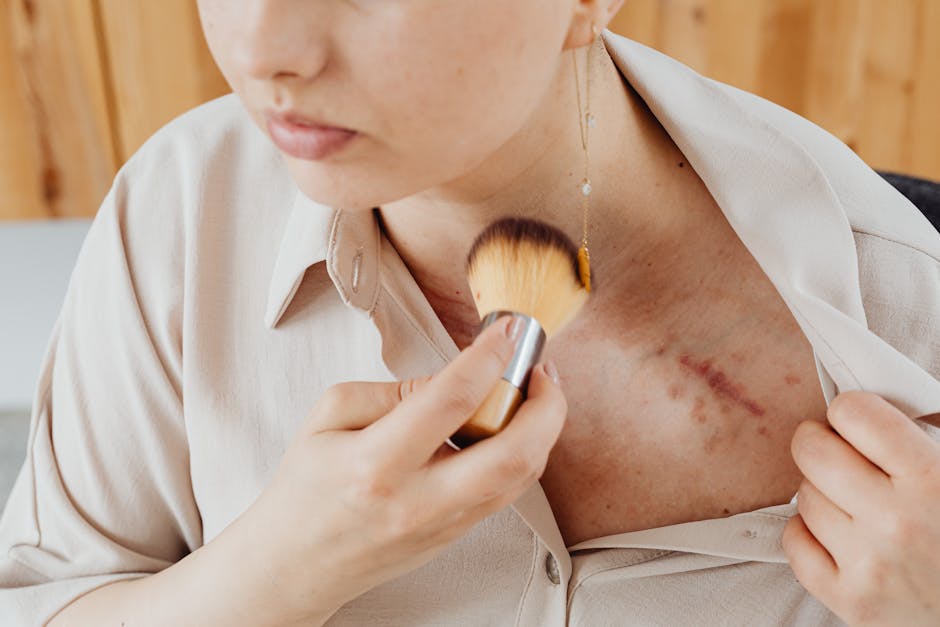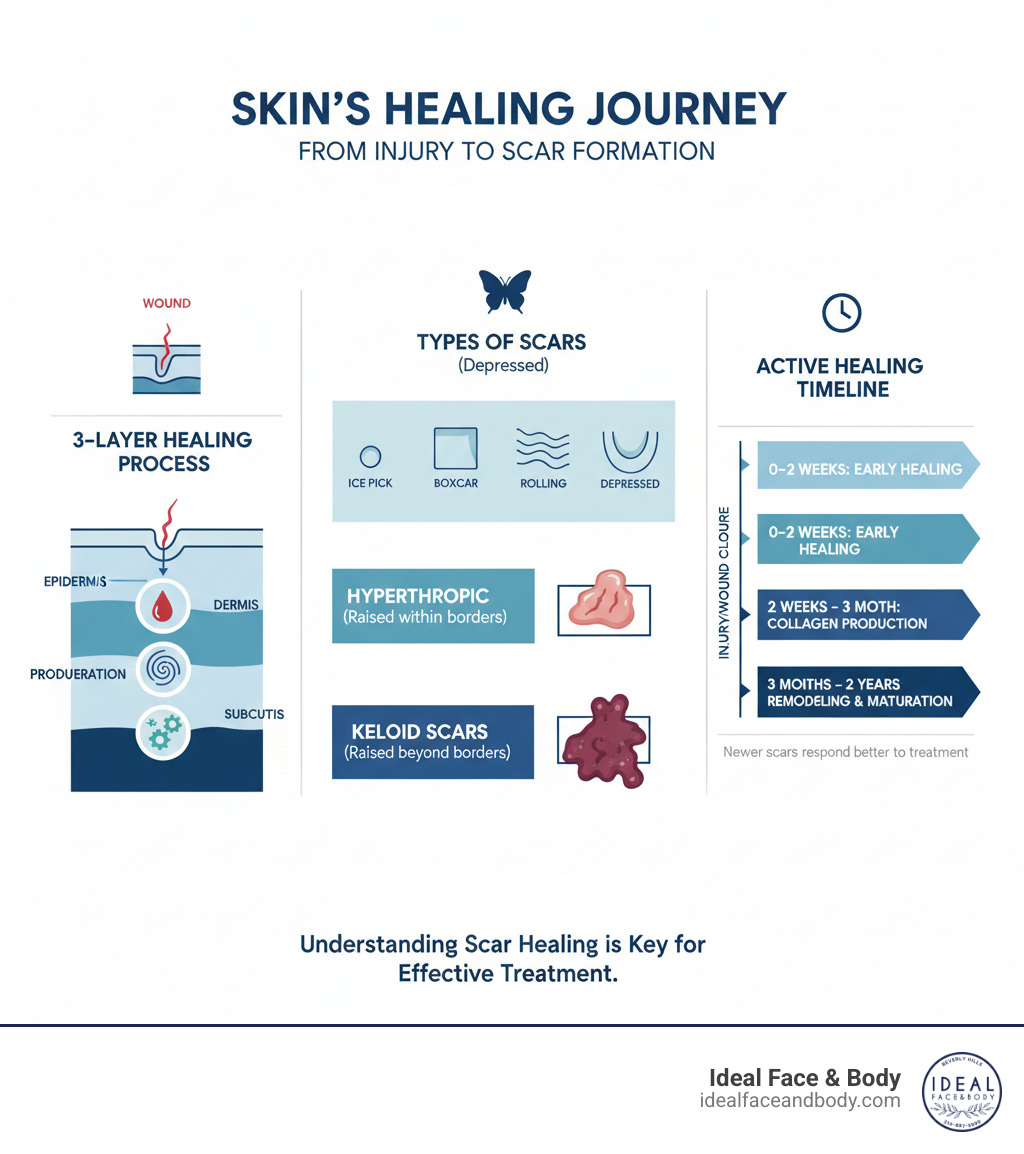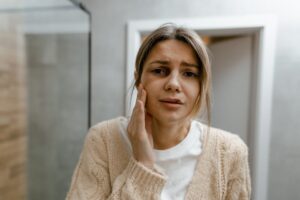Why Understanding Scar Healing Treatments Matters for Your Recovery
Scar healing treatments can improve a scar’s appearance and texture, though complete removal isn’t possible. Here are your main treatment categories:
At-Home Options:
- Silicone gels and sheets (most effective over-the-counter option)
- Retinoids for texture improvement and discoloration
- Vitamin C for brightening and antioxidant benefits
- Proper sun protection with SPF 30+
Professional Treatments:
- Laser therapy for resurfacing and collagen stimulation
- Injectable treatments (steroids for raised scars, fillers for depressed scars)
- Chemical peels and microneedling
- Surgical revision for severe cases
Whether it’s acne scars, surgical scars, or stretch marks, remember: scars are permanent but treatable. The realistic goal is to make scars less noticeable by improving their texture and color.
Healing involves collagen production. Too much creates raised scars; too little creates depressed scars. Areas with more movement tend to heal less well because stretching interferes with proper healing.
Timing matters greatly. Newer scars respond better to treatment than older ones. Starting treatment as soon as your wound has fully closed gives you the best results. However, scars continue remodeling for up to two years, so it’s never too late to see improvement.
As Dr. Sarah Yovino, a double board-certified master injector specializing in non-surgical medical aesthetics, I’ve helped countless patients improve their scars with advanced scar healing treatments and combination therapies. My experience in pain management and precise injection techniques allows me to offer solutions that improve your natural healing process.
Understanding Scars: How They Form and What They Look Like
When your skin is injured—from a cut, surgery, or acne—your body begins a remarkable healing process. When the dermis (the skin’s deeper layer) is damaged, your body produces collagen fibers to repair it. This new tissue often looks and feels different from the original skin.
Several factors determine a scar’s final appearance. The depth of your wound is critical; deeper injuries create more noticeable scars. Your scar’s location also matters. Areas with frequent movement, like your knees or elbows, tend to heal less smoothly because the tissue is constantly stretched.
Your age influences healing; younger skin can heal vigorously, sometimes leading to more prominent scarring. Genetics and ethnicity are also major factors. Some people are genetically more prone to certain types of scars, which determines how their skin responds to injury.
People with darker skin tones, for example, are more likely to develop keloid scars. This isn’t a flaw—it’s just how different skin types naturally respond to healing.
The Main Types of Scars
Understanding your scar type is crucial for choosing the right scar healing treatments, as each responds differently.
Atrophic scars are sunken-in types that create depressions on your skin’s surface. They happen when your body doesn’t produce enough collagen during healing, leaving you with thin, depressed areas. These scars can even appear lighter than your natural skin tone.
This category includes ice pick scars (narrow, deep holes), boxcar scars (wider with sharp edges, like chickenpox marks), and rolling scars (creating a wavy, uneven texture).
Stretch marks are also a type of atrophic scar. They appear as thin, indented lines when your skin stretches or shrinks rapidly. You might see them in white, pink, purple, or blue—each color telling the story of when they formed.
Hypertrophic scars are raised and thick from excess collagen but stay within the original wound’s boundaries. They are often red or pink and may be itchy or tender.
Keloid scars are also raised but grow beyond the original injury site, sometimes for years. They are stubborn to treat, can recur, and may darken with sun exposure.
Contracture scars typically result from burns. As they heal, the skin tightens and can restrict movement, especially if they’re near a joint. These often need surgical intervention to restore proper function.
Not every post-injury mark is a scar. Red or brown spots are often post-inflammatory hyperpigmentation or erythema. While these can be stubborn, they are generally easier to treat than true scars and often fade naturally with proper care.
At-Home and Over-the-Counter Scar Management
At-home scar management begins with proper wound care. How you care for a wound in the first few weeks can make a significant difference in its final appearance.
Proper wound care starts with keeping the wound clean with gentle soap and water, then creating a moist healing environment by covering it with a bandage. Contrary to the old advice to “let it breathe,” modern science shows that a moist environment helps wounds heal better with less scarring.
One of the biggest mistakes is picking at scabs. I know it’s tempting, but scabs are your skin’s natural bandage. Picking them restarts the healing process and increases your chances of a more noticeable scar.
Your pharmacist is a valuable resource. They can guide you to the most effective over-the-counter scar healing treatments available without a prescription.
Topical Scar Healing Treatments: Creams, Gels, and Sheets
Not all topical scar treatments are equal. Understanding what works can save you time and frustration.
Silicone gels and silicone sheets are the gold standard of topical scar healing treatments, backed by decades of research. Silicone creates a hydration barrier over the scar, helping with collagen regulation and providing an ideal healing environment.
Silicone sheets apply gentle pressure and maintain moisture; wear them for at least 12 hours daily for best results. Silicone gels offer similar benefits with more convenience, drying clear in minutes.
Retinoids, including over-the-counter retinol and prescription options, work by increasing your skin’s renewal process. They are particularly effective for discoloration and mild texture issues due to increased cell turnover. Start slowly with these ingredients, as they can cause irritation.
Vitamin C is notable for its antioxidant benefits and ability to tackle hyperpigmentation. While it won’t change a raised scar’s thickness, it can improve the redness and discoloration that make scars noticeable.
Chemical exfoliants like AHAs and BHAs can be game-changers for surface texture and discoloration. Alpha-hydroxy acids (glycolic, lactic) and beta-hydroxy acids (salicylic) gently remove dead skin cells and can help even out skin tone.
The Critical Role of Sun Protection
Sun exposure is a major enemy in the scar-healing process. It can turn a faint scar into a dark, prominent mark.
Sunscreen with SPF 30 or higher is essential for healing scars. New scar tissue is highly susceptible to UV damage, which is difficult to reverse. This leads to preventing discoloration and preventing hyperpigmentation that can worsen the scar’s appearance.
Research shows that various factors influence scar healing, and sun protection is a critical component of proper care.
Sun-protective clothing is also a great option, especially for scars on areas that are easy to cover. It’s insurance for all the other work you’re doing to help your scar heal.
Here are our essential sun protection tips for scars:
- Apply broad-spectrum sunscreen daily, even on cloudy days, and reapply every two hours
- Cover scars with clothing or specialized UV-protective fabric when possible
- Seek shade during peak UV hours (10 a.m. to 4 p.m.)
- Be consistent—sun protection is a daily commitment
- Consider a physical sunscreen with zinc oxide or titanium dioxide for sensitive skin
Natural Remedies for Scar Healing Treatments: What Science Says
While evidence-based treatments are best, some natural remedies have scientific backing.
Aloe vera has earned its reputation as a healing helper. Research confirms it can improve wound healing and may help with scars when used with other treatments.
Rosehip oil is another natural option with scientific credibility. Studies show this oil can significantly improve wound healing and scar appearance.
Coconut oil, lavender oil, and honey have shown some promise in research, though the evidence varies. These aren’t miracle cures but might offer modest benefits.
However, let’s be honest about what lacks strong evidence. Vitamin E, despite its popularity, has inconclusive evidence supporting its use. Lemon juice can make your skin more sensitive to sun damage—the opposite of what you want for scars.
Natural remedies can be gentle additions to proven treatments but shouldn’t replace them. Always perform a patch test before applying anything new to healing skin.
Professional Scar Healing Treatments: From Lasers to Surgery
If at-home care isn’t enough, or if a scar causes discomfort, limits movement, or affects your confidence, it’s time to consult a board-certified dermatologist or plastic surgeon.
At Ideal Face & Body in Beverly Hills, CA, we specialize in diagnosing your scar type and creating personalized treatment plans. Dr. Sarah Yovino and Dr. Justin Yovino bring years of expertise in advanced scar healing treatments, understanding that every scar requires an individualized approach.
Professional treatment often involves combination therapies. We might pair laser treatments with injectables or follow surgery with targeted aftercare. This comprehensive approach offers the best chance for dramatic improvement.
Injectable Treatments for Scar Remodeling
Injectable scar healing treatments are precision tools that target specific scar tissue. We customize the approach based on whether the scar is raised, depressed, or causing discomfort.
Corticosteroid injections are our go-to for flattening raised scars, like stubborn hypertrophic scars and keloids. These injections work by reducing inflammation within the scar tissue, which calms overactive collagen production.
Patients usually see scars become softer, flatter, and less red. Injections are spaced 4-6 weeks apart. Itching and pain associated with raised scars often improve as well.
For depressed scars, such as those from acne or injuries, dermal fillers offer a neat solution. We use hyaluronic acid-based fillers to gently plump up atrophic scars from underneath, creating a smoother skin surface. The results are immediate, though maintenance treatments are needed every few years.
Advanced Surface and Laser Therapies
Modern laser and surface treatments are exciting advances in scar healing treatments. They allow us to precisely target a scar’s texture, depth, color, and overall appearance.
Laser therapy has revolutionized scar treatment. Laser resurfacing removes damaged skin layers to encourage new, smoother skin growth. We use ablative lasers for dramatic results or non-ablative options to stimulate collagen production without affecting the surface.
Vascular lasers are excellent for reducing redness in scars. They target blood vessels within the scar to fade pink or red coloration, precisely treating discolored areas while leaving healthy skin untouched.
Chemical peels use selected chemical solutions to exfoliate damaged skin layers. We can adjust the peel’s depth based on your scar type and skin tolerance.
Dermabrasion is a mechanical approach, using a rotating device to sand away the outer layers of damaged skin. This encourages the growth of new, smoother skin.
Microneedling harnesses your skin’s natural healing abilities. By creating tiny micro-injuries with fine needles, we trigger increased collagen and elastin production. This versatile treatment improves texture, reduces stretch marks, and softens various scars. Learn more about our microneedling treatments here.
For deep, tethered acne scars, subcision offers a targeted solution. This technique releases the fibrous bands pulling down on depressed scars, allowing the skin to rise.
Surgical Scar Revision Options
When scars cause functional impairment or impact your quality of life, surgical revision may be the best option. These procedures can restore movement, reduce pain, and improve daily life.
Scar excision involves surgically removing the scar tissue. We then reconstruct the area with healthy surrounding skin, often resulting in a less noticeable scar.
Z-plasty is a surgical technique where we create Z-shaped incisions to reposition scars into natural skin folds, making them less visible and releasing tension.
For extensive scarring, like from burns, skin grafts may be necessary. This involves transplanting healthy skin from another area of your body to replace the damaged tissue.
Tissue expansion is an innovative approach where we place an implant beneath healthy skin near your scar. We gradually stretch it to create additional healthy tissue, which is then used to replace the scar.
It’s important to understand the benefits and drawbacks of surgical revision. While results can be remarkable, new scars can form or existing ones may return. We’ll discuss all potential outcomes during your consultation to ensure you have realistic expectations.
Frequently Asked Questions about Scar Treatments
We’ve been helping patients improve their scars for years, and certain questions come up again and again. Here are the answers to the most common ones.
Can scars be completely removed?
The honest truth is that scars are permanent. Once scar tissue forms, it’s there to stay. The good news is that we can significantly improve how a scar looks.
The goal of scar healing treatments is to make the scar blend with the surrounding skin. We can improve texture, reduce discoloration, and smooth raised or indented areas. Many patients are amazed at the results.
Your scar will also naturally fade over time. Most scars become lighter and less noticeable as months and years pass. Professional treatments help speed up this process and provide much better results than time alone.
Are older scars harder to treat?
Yes, older scars are more challenging, but improvement is still possible. Newer scars are more pliable as they actively remodel for up to two years, making them more responsive to treatment.
A mature scar (usually after two years) is denser and more resistant to change. However, we’ve seen incredible improvements in decades-old scars using advanced scar healing treatments.
Laser therapy is particularly effective for older scars, though it typically requires more sessions than treating a newer one. We often combine treatments for the best results. The key is patience—older scars take more time and commitment, but the improvement can be remarkable.
Is scar treatment covered by insurance?
This depends on why the scar is being treated. Insurance distinguishes between cosmetic treatments (for appearance) and medical necessity (the scar causes functional problems).
Coverage is possible when your scar causes functional impairment. This might include ongoing pain, persistent itching, or restricted movement, especially near a joint. Significant emotional distress from a scar can sometimes qualify for coverage.
When we believe insurance might cover your treatment, we’ll help you document everything properly. This usually involves a detailed letter explaining how the scar affects your daily life, along with photos and other medical documentation.
If treatment is purely for cosmetic reasons, insurance typically won’t cover it. However, we can discuss treatment options that fit various budgets.
The best approach is to call your insurance company directly and ask about their specific policy on scar treatments, as every plan is different.
Your Path to Smoother Skin Starts Here
Understanding your options for scar healing treatments is the first step toward smoother, more confident skin. Whether you have acne scars, surgical scars, or stretch marks, the path forward doesn’t have to be overwhelming.
Every scar is unique. What works for one person may not be right for you. That’s why we create personalized treatment plans based on your scar type, skin tone, lifestyle, and goals.
At Ideal Face & Body in Beverly Hills, CA, we’ve seen how the right combination of treatments can transform not just skin texture, but confidence. Dr. Justin Yovino, our board-certified plastic surgeon, and Dr. Sarah Yovino, our master injector specializing in non-surgical medical aesthetics, work together to create comprehensive scar healing treatments that address your unique concerns.
Your journey might involve starting with at-home treatments and moving to professional sessions like microneedling or lasers. We often layer different approaches for maximum improvement.
The goal is improvement that makes you feel more comfortable in your skin. Whether the changes are dramatic or subtle, any boost in confidence is a victory worth celebrating.
Your journey starts with understanding your options and flourishes with professional guidance custom to you. We’re here to walk with you every step of the way, from your first consultation to your maintenance routine.











